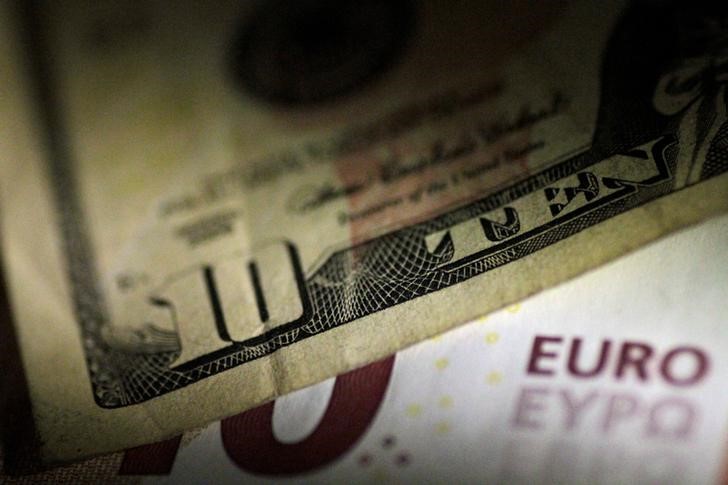U.S. may expand Nvidia and AMD’s 15% China chips deal to other companies
Investing.com - The US dollar edged lower Thursday, sliding to a four-month low amid trade tariffs uncertainty, while the euro surged following Germany’s fiscal announcement.
At 04:30 ET (09:30 GMT), the Dollar Index, which tracks the greenback against a basket of six other currencies, traded 0.1% lower to 104.180, near its weakest level since late October.
Dollar slips on tariffs exemption
Losses in the dollar came after U.S. President Donald Trump made a one-month exemption for U.S. automakers from recent tariffs on Canada and Mexico. Reports showed Trump was also considering exempting agricultural goods.
The move drove some bets that Trump’s tariff agenda will not be as disruptive as initially feared, helping boost risk appetite and drawing more traders away from the dollar.
“The U.S. has granted a USMCA exemption to autos, which have heavy cross-border supply chains with Canada and Mexico and has been identified as potentially the most vulnerable sector to the fresh 25% duties,” said analysts at ING, in a note.
“Both currencies are trading slightly stronger week-on-week as the negative U.S. rerating continues to prevent the USD from reaping the benefits of U.S. tariffs, and markets are not fully pricing in long-lasting tariffs.”
Euro to benefit from increased defence spending?
In Europe, EUR/USD traded 0.2% higher to 1.0809, extending four-month highs following the decision of the German government to loosen its fiscal rules, while unleashing a 500 billion infrastructure fund.
“This has generated a seismic shift in European markets. Yesterday’s 40 bps selloff in bunds was largely matched by other EU sovereigns on the view that deficits will increase, inflation may rise, and growth can improve,” said analysts at ING, in a note.
“The implications for the euro are enormous. EUR/USD is trading at 1.08 and following a 3%+ rally in the past two sessions,” ING added. “We are reluctant to call for the peak in EUR/USD just yet.”
The euro is on track for its best week since March 2009, although the policy decision from the European Central Bank later in the session could impact this positive tone.
A quarter-point rate cut is widely expected, and so the majority of the focus will be comments from President Christine Lagarde as traders look for clues of the scope and pace of easing beyond that.
“The repricing in the ECB curve has largely happened already, but President Christine Lagarde can still give an extra boost to the euro should she signal a more cautious tone on further cuts,” ING added.
GBP/USD edged higher to 1.2898, climbing to levels last seen in November last year.
Yen nears five-month high
In Asia, USD/JPY dropped 0.6% to 148.07, with the pair sinking to a near five-month low, as safe haven demand for the yen rose sharply amid increased trade tensions.
USD/CNY traded 0.1% lower to 7.2426, with the Chinese currency lifted by Beijing flagging plans for higher fiscal spending this year, aimed chiefly at shoring up weak consumption and supporting economic growth.
But China offered few details on what the planned measures will entail, keeping markets uncertain over the country’s outlook.
